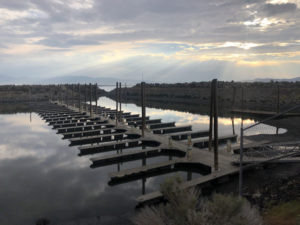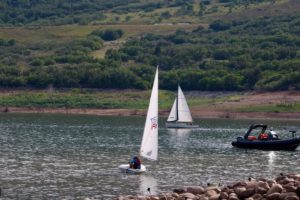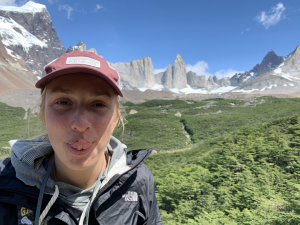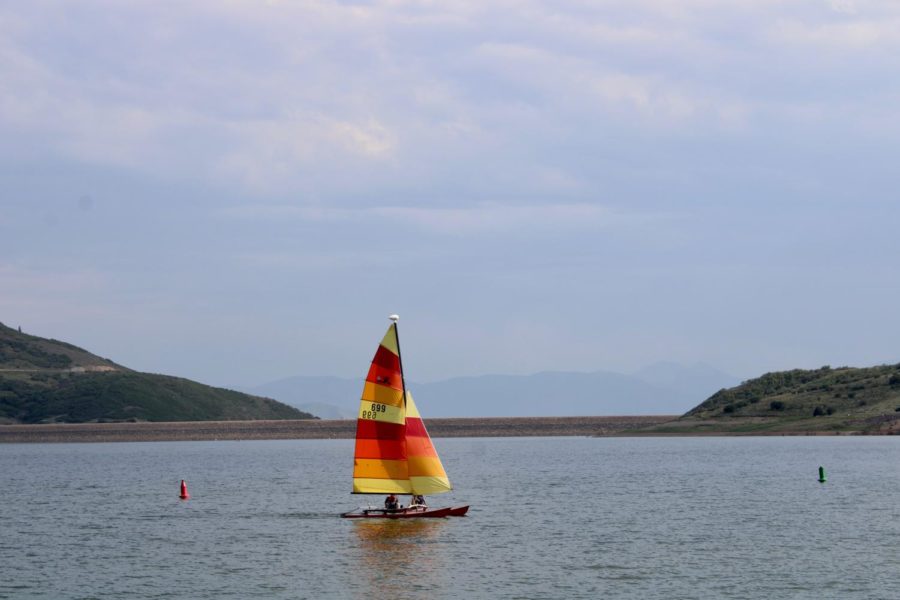Setting Sail In Utah
“The liquid lie of the West” is how Utah writer, naturalist and activist Terry Tempest Williams describes Salt Lake City’s namesake water body. The Great Salt Lake offers undrinkable water in a parched desert that is home to a metropolis with an insatiable thirst. To many locals, the Great Salt Lake is not much to behold; a majority have never stopped at its salty shores. Many have gazed across it, admiring the reflection of the mountains on its glassy surface through the window of their vehicle as they race by, on their way to anywhere else. But to “The World’s Saltiest Sailors,” the Great Salt Lake, though lacking any physical outlets, is exactly the outlet they need as sailors living in a landlocked desert state.
Sailing on the Great Salt Lake has a surprisingly long history. The first boats recorded on the GSL were from some of Utah’s colonizers, exploring the islands and expanses of the GSL in the late 1840s. Sailboats were used to then transport materials out to the islands. Sailing for pleasure followed within ten years and was even a commercial attraction for resorts in the area into the 1900s. Sailing as a competitive sport followed. The first yacht club in Utah was established in 1877 and coined the aforementioned title of “The World’s Saltiest Sailors.” The club is still active today, hosting multiple races and regattas every year.
The early sailors of the Great Salt Lake quickly discovered that the unique conditions on the shallow remnants of the ancient Lake Bonneville required unique vessels. The shallow, hypersaline waters of the lake required sailors to modify the craft they were accustomed to. Boat building connoisseurs might be able to recognize the architecture of early Great Salt Lake watercraft: flat bottomed, low and wide vessels with a sharp bow. The boats built before the completion of the transcontinental railroad displayed even more regionality, made with lumber sourced from the Wasatch. Modern watercraft on the Great Salt Lake must be able to withstand the punches of waves that are much denser than usual due to the salinity of the water. Iron fastenings and other hardware on the boats are known to corrode faster than in ocean environments for the same reason. The conditions today are much the same but with a lot less lake to sail on. The shoreline has shifted literal miles over the past several decades and the water, while already having a much higher salinity than the ocean, continues to get saltier. Because of these challenges, the GSL isn’t seen as the easiest place to learn to sail or keep your first boat, but something about the novelty of sailing there continues to draw in sailors both old and new.
To get a feel for the sailing community on the Great Salt Lake, head to the Great Salt Lake State Park. The marina there has slips for over 300 boats and is home to a lively sailing community of what certainly feels like non-traditional sailors.
Pahoo Laffing Crowfoot, works, lives and sails at the Great Salt Lake. When picturing the stereotypical member of a modern yacht club, most probably imagine rich, white guys clad in Helly Hansen polos, Sperry Topsiders and visors — this is not Pahoo. The 77-year-old Navajo sailor redefines who belongs in the sailing community. He’s been sailing the GSL since the late ’70s and has lived in the park since 2003. He’s a known character around the marina and the kind of guy to keep his pockets stuffed with candy to share. Pahoo knows his nautical neighbors by their boats (sometimes only remembering the boat’s name and not the owner’s) and insists that every boat has a story, as does each owner who has somehow found their way to this lake in the desert. Pahoo says his boat, Adjust 2 Survive, named itself and that adjusting to survive has become a sort of mantra in his life. “If you don’t make adjustments, you’ll sink,” he warns.
In 2021, sailing on the Great Salt Lake has presented challenges that call for major adjustments. The lake is rapidly approaching a 58-year low that will undoubtedly be surpassed this fall. It’s not the first time low-water has proposed a challenge for the marina; in the past ten years, the Utah state legislature allotted millions of dollars for the state park to dredge the bottom and exit of the marina, freeing debris and increasing the water depth by several feet, allowing boats to come and go. Fast forward to the present with lots of windy days along the way and most of that debris is back where it was, leaving the marina unnavigable to many vessels. The shrinking of the Great Salt Lake threatens to bring a slew of serious environmental consequences to the area including loss of critical migratory bird habitat and arsenic dust becoming airborne, making the region’s air quality even more of a hazard. The diminishing lake also threatens to put an end to this 150-year-old tradition. Over 100 boats have been craned out of the lake and sit around the parking lot of the marina. Those without trailers or whose owners have abandoned them now lay on their keels in the dirt.
Luckily, the GSL isn’t the only place to sail in Utah. Despite being one of the driest states in the U.S. in terms of both precipitation and total water area, the state offers quite a few places for sailors to get out on the water. The most popular options include Utah Lake, Jordanelle Reservoir, and Bear Lake. Sailing in each of these places is trickier in drought years as most of the infrastructure (boat ramps, docks, etc.) was established with much deeper conditions. So long as there’s water and wind, there will be sailors, even during the drought. 
Another Utah native, Chris Julian, got his start sailing on the GSL as a college student attending the University of Utah. He fell in love with sailing in the Beehive State and refined his skills on Utah’s lakes before taking to the ocean. Like Pahoo, Julian acknowledged that the sailing community here, and even around the world, is not what one might imagine. Before he got into the sport, Julian says he imagined “…a bunch of rich white guys standing around the yacht club in their double-breasted suit jackets and showing off their expensive boats.” But he says that this vision, “Couldn’t be further from the truth.” Regular people, as it turns out, are the captains of most of the boats in Utah. Julian and Pahoo have both found sailors to be the friendliest, most down-to-earth people you can find.
To call Julian an experienced sailor would be an understatement. From his humble introduction to the sport on the GSL, to sailing from Florida halfway around the world to New Zealand, Julian has spent a lot of time on a boat (especially for a Utahn). He has taken advantage of many of the perks of this kind of travel, most notably being able to reach places that land-restricted tourists never will.
“Being on a sailboat made it so much more affordable!” Julian explains, “Our family adventure took almost two years of planning to figure out how to make it happen, but it all started in realizing that you don’t have to be rich to pull it off and that the experiences are well worth the effort.”
Julian now serves as a community sailing advocate, helping others get in touch with the freedoms that this sport allows.
For those interested in learning to sail there are opportunities across the Wasatch Front. There are multiple sailing schools in the area including the Bonneville Sailing School and the Park City Sailing Association. The University of Utah has also periodically offered a sailing course that is a great introduction to the sport.
When considering outdoor recreation along the Wasatch Front, sailing doesn’t come to mind for most. For a sport that can seem intimidating and inaccessible, new students will find that getting out on a boat can cost even less than getting out on the ski slopes. It also offers the same opportunities for development of skills and techniques as any other sport, in addition to the opportunity to compete. As a bonus, in Utah you can sail almost year-round.
The magic and enjoyment of sailing seem to be a balancing act of just being out on the water and the mastery of your boat-tacking and jibing, easing and trimming the sails, dodging the boom, heeling across the water, swapping sails and rigging, understanding the scope and rode of anchoring, and reading clouds to predict the weather. To sum it up in non-nautical terms: adjusting to survive.



